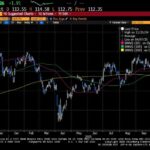The Federal Reserve just reduced interest rates for the first time in four years. Here’s how it will impact borrowers and saver
What goes up must come down, and after four years, that’s finally true about interest rates.
The Federal Reserve cut its benchmark rate on Sept. 18 a half point, dropping its target range to between 4.75 and 5.0 percent, signaling that it is now less concerned about inflation than it is about indications that the overall economy and job market are starting to cool.
“The Fed is mindful of both inflation and job growth, and inflation is coming down close to its target, and the broad markets are showing signs of softening,” says Gary Schlossberg, global strategist with the Wells Fargo Investment Institute. “That’s all against the backdrop of slowing economic growth.”
The Fed’s rate cut and those that will likely follow in the coming months have broad implications for older Americans and the economy as a whole, potentially bringing some relief to borrowers 50 and older who are struggling amid high interest rates. Unfortunately, rate cuts also potentially mean lower returns for savers.
This month marks the first time the Federal Reserve has cut interest rates since March 2020, when the Fed slashed rates to nearly zero in a bid to resuscitate the economy after it ground to a halt during the pandemic. Rates remained at rock-bottom levels until 2022, when the Fed began a series of rate hikes aimed at taming then-rampant inflation.
Why the Fed lowers interest rates
The federal funds rate is one of the most powerful tools the Fed has in its arsenal to influence the economy. The benchmark rate has a trickle-down effect on interest rates for consumers across a range of financial products, such as mortgages, auto loans and credit cards. The Fed cuts interest rates when it’s looking to stimulate the economy by making borrowing cheaper.
“Now that [the Fed has] pushed interest rates up high enough to get inflation into a neighborhood they feel comfortable with, they have to ease off the brakes so the current high interest rates don’t slow the economy too much, too soon,” says Greg McBride, chief financial analyst at Bankrate.com.
Here’s what you need to know about the impact of the Fed’s new rate cut.
What the rate cut means for borrowers
Borrowers are the clearest winners following a Fed rate cut, since many consumers’ interest rates tend to rise or fall in the same direction as the federal funds rate.
“For borrowers, rate cuts are generally good news, because it lowers the cost of borrowing, but different parts of the market are impacted differently,” says Collin Martin, fixed income strategist at the Schwab Center for Financial Research.
Many auto loans have fixed interest rates. That means if you have an existing fixed-rate auto loan, the rate will remain at its current level unless you refinance. New car buyers, however, will likely see lower rates for auto loans.
Credit cards, on the other hand, typically have adjustable interest rates. Cardholders will likely see rates slowly start to come down from their current average of 25 percent, the highest monthly average credit card rate in at least five years, according to LendingTree data.
“It’s also worth remembering that even if they do influence them, the Fed doesn’t directly set rates for credit cards and auto loans,” says Jacob Channel, a senior economist at LendingTree. “So even if the Fed’s benchmark rate comes down, other factors like [consumers’] credit scores and incomes will still play a major role in the types of rates that individual borrowers get.”
What the rate cut means for savers
While savers are likely to see a decline in the amount of interest they’ll earn on savings accounts and certificates of deposit (CDs), McBride says that in the near term, they should still be able to earn a high enough return on high-interest products to at least beat inflation.
“The outlook for savers is still a good environment, and it will be for the foreseeable future,” says McBride. “In the end, it depends on how the economy fares as to how aggressive the Fed has to be. If we get a soft economic landing, the Fed won’t have to cut rates dramatically, and savers could be in a situation where they’re earning 3 percent in a 2 percent inflation environment, and you’re still ahead of the game.”
In the meantime, savers should ensure that they’re taking advantage of high-yield savings accounts, which can offer rates as much as 10 times higher than those of traditional savings accounts.
McBride also suggests that consumers with extra cash consider locking in today’s higher rates for CDs before they start to fall. For retirees looking for steady returns on their savings, a CD could be a good place to grow money.
“Now is a great time to be locking in those CDs or high-quality bonds, setting up that predictable stream of interest income,” McBride says. “You’re not going to get better yields by waiting, so doing that now, when you can still find yields of 4 or 5 percent across the maturity spectrum, that’s the move to make.”
https://www.aarp.org/money/budgeting-saving/info-2024/fed-rate-cuts-meaning.html





